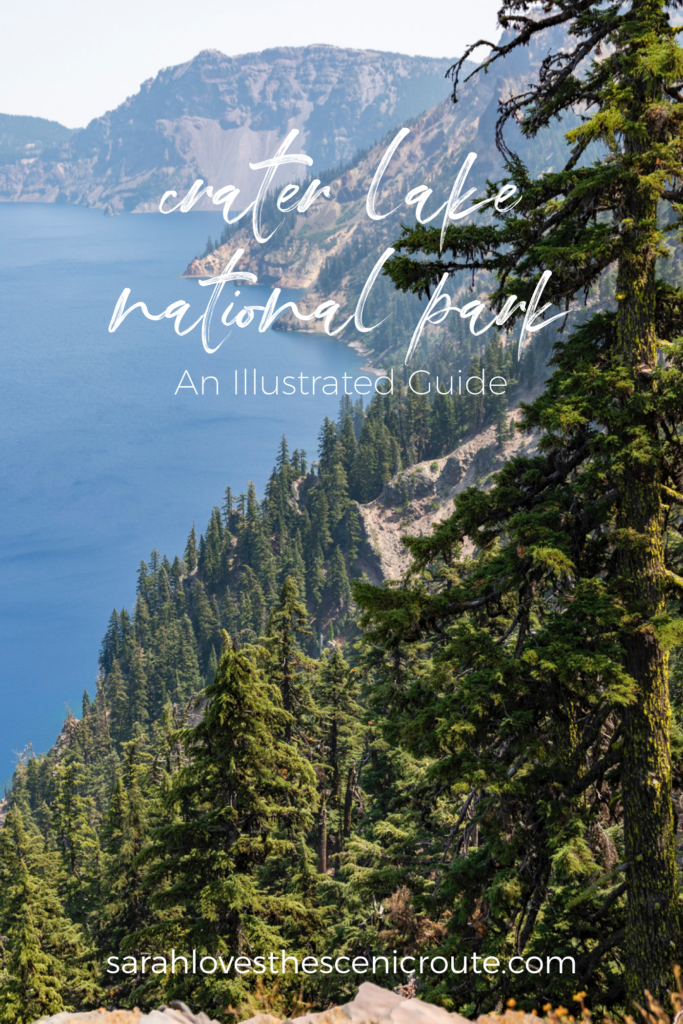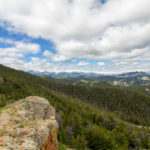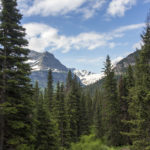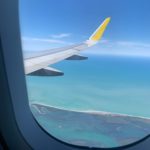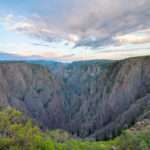Crater Lake National Park is one of the most unique and epic natural features to exist. Around 8,000 years ago, Mount Mazama experienced a powerful eruption, so forceful that it caused the mountain to cave in on itself. The result was the creation of a giant caldera surrounded by jagged cliffs. Over time, the caldera began to fill with water from melting snow and rainfall. It now holds 5 trillion gallons of almost perfectly pure water. It’s so pure that the true blueness of water is astonishingly apparent.
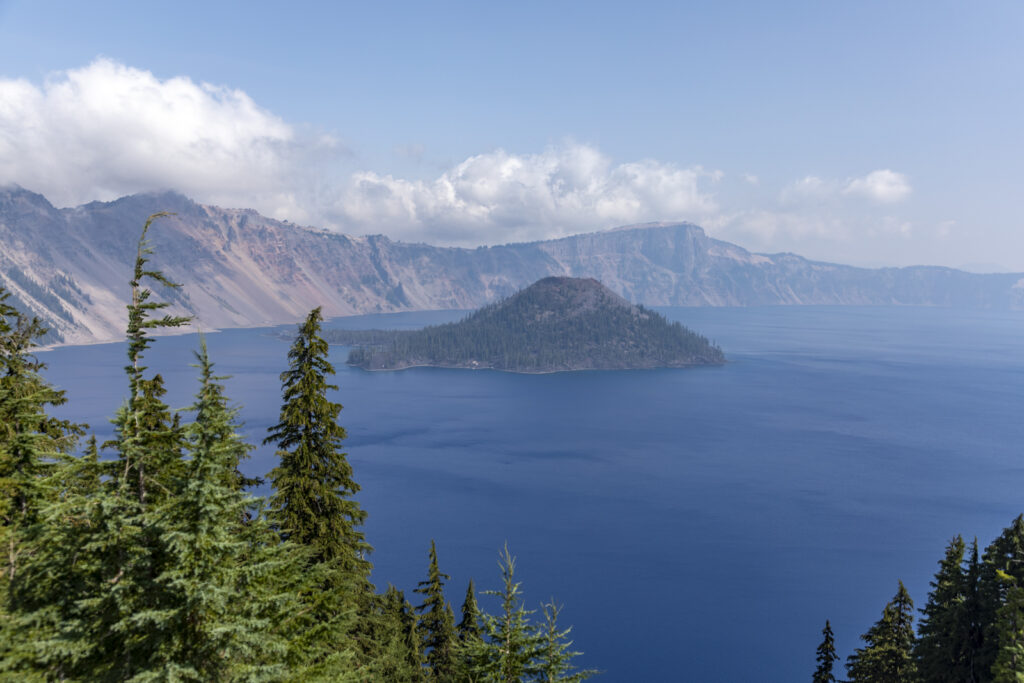
What You Need to Know Before Visiting Crater Lake National Park
Location:
Crater Lake, Oregon 97604
Phone:
(541) 594-3000
Website:
Size:
183,224 Acres
Annual Visitors:
614,000
Park Hours:
All-day, every day
Entrance Fee:
The entrance fee for Crater Lake National Park is a one-time payment upon entering the park that’s good for up to 7 days.
- vehicles (non-commercial, and 15 passengers or less): $30 in the summer (May 22nd – October 31st), $20 in the winter (November 1st – May 21st)
- motorcycles (up to two passengers): $25 in the summer, $15 in the winter
- bicycles and pedestrians: $15 per individual (youth ages 15 and under are free)
If you are an avid park go-er, you can purchase an annual pass for $55.
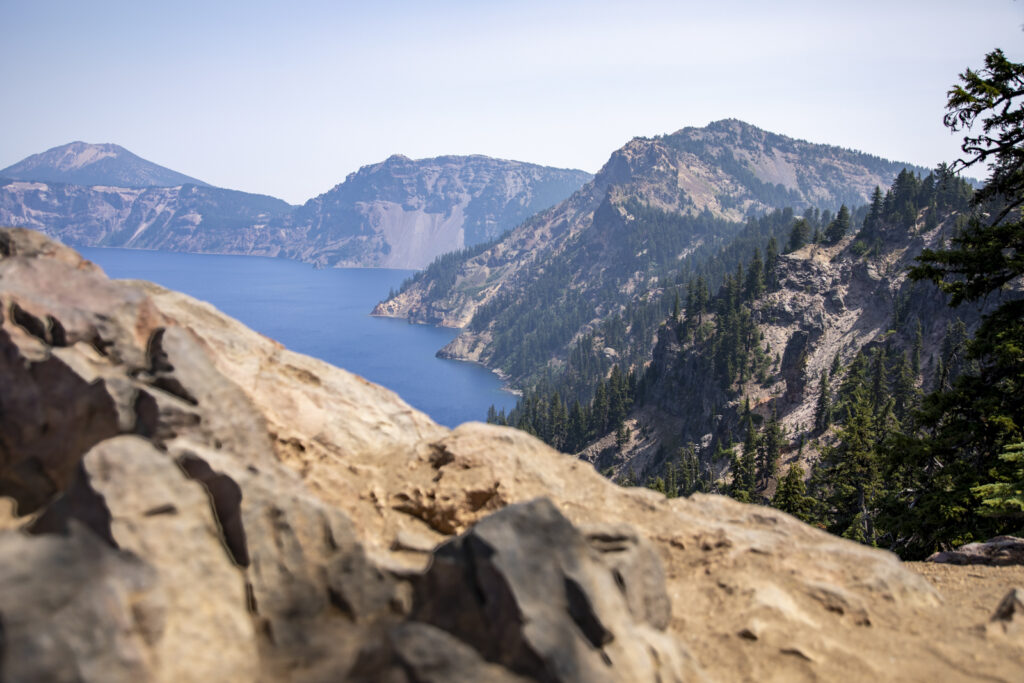
When to Visit
The park is open year-round, but there are closures during certain times of the year. Rim Drive and the North Entrance are closed from mid-October until June. Rim Visitor Center is seasonal as well, but Steel Visitor Center is open every day except Christmas. The park is popular during July and August when roads begin opening up again. Visit in late June, September, or October for fewer crowds. The road to Rim Village is remains plowed if you’re interested in visiting during winter.
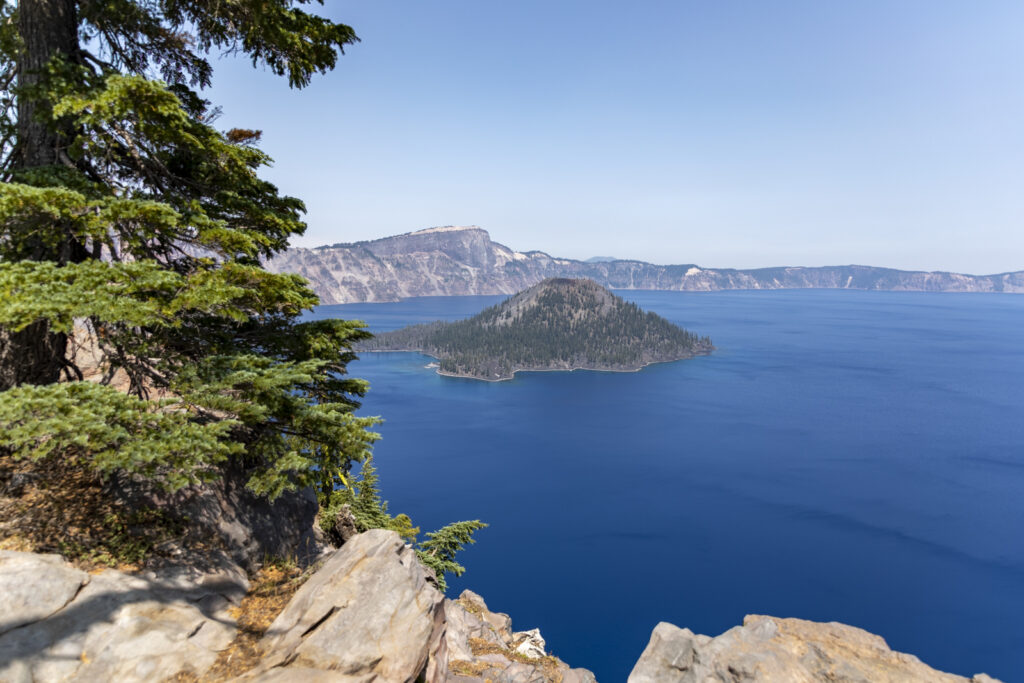
Entering and Traveling Through Crater Lake National Park
Airports: The closest airports are Klamath Falls and Rogue Valley-Medford. Portland International Airport is about 244 miles away.
Driving: Most roads are in a loop around Crater Lake, with a few branching off. You can enter the park three different ways. Take N Umpqua Hwy to the North Entrance, or you can take Crater Lake Hwy (route 62) to the Annie Spring Entrance from the west or the south.
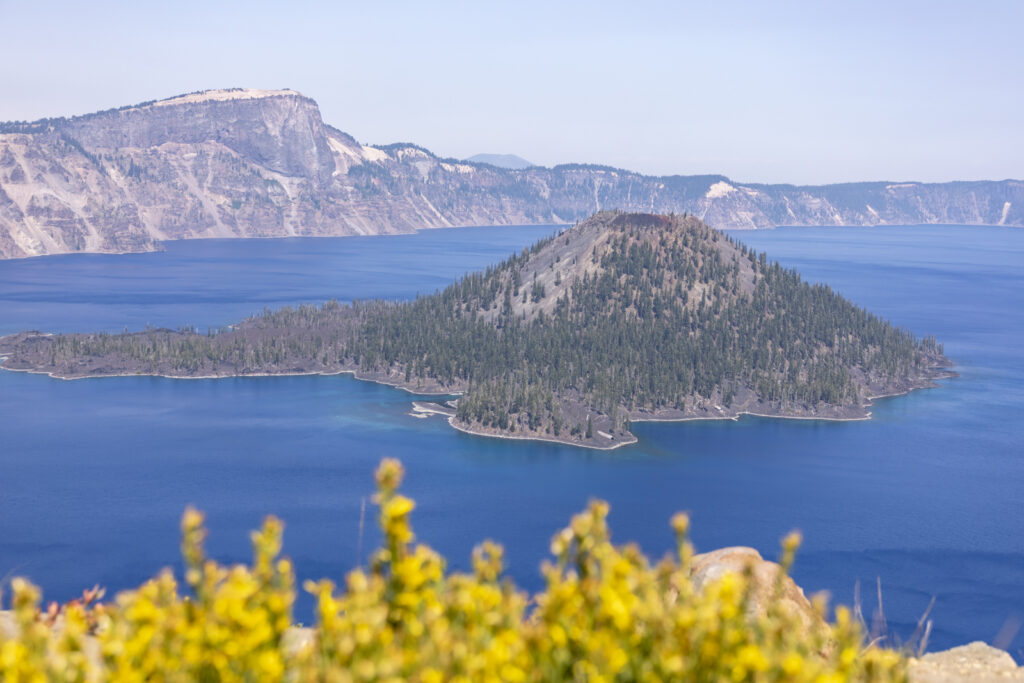
What to Do
Hiking: There are 90 miles of maintained incredible hiking trails throughout the park.
- Rim Drive: There are many hikes located along the Rim Drive including Watchman Peak (1.6 mi), Cleetwood Cove (2.2 mi), and Mount Scott (5 mi), which are located on the northern half of the loop. Along the southern half, there’s Discovery Point (2.2 mi), Sun Notch Viewpoint (0.5 mi), and Crater Peak (6.4 mi).
- Wizard Island: There are two trails on Wizard Island, but you must take a boat tour to get there. The trails are Fumarole Bay (1.8 mi) and Wizard Summit (2 mi).
- Steel Visitor Center: Lady of the Woods is a short 0.3 mi self-guided loop.
- Crater Lake Lodge: Near the lodge is the Garfield Peak trail (3.4 mi), which has wildflower and lake views.
- Pinnacles Spur Road: Located in the southeast corner of the park, Pinnacles is a 1 mi hike with views of volcanic spires.
- Mazama Village: Located near the Annie Spring Entrance in the southern half of the park, is the Annie Creek Canyon Trail (1.7 mi). You can also find Union Peak (11 mi) and Godfrey Glen (1 mi) in this area.
Biking: Biking is allowed on all paved roads and Grayback Drive (unpaved).
Winter Activities: Rangers offer free snowshoe tours every Saturday and Sunday. Cross-country skiing is another popular winter activity.
Ranger Programs: Rangers give free talks, walks, and evening programs from June to September.
Swimming: Take a swim in the bright blue water of Crater Lake (if you don’t mind a strenuous 2 mi hike down to Cleetwood Cove, and the cold water).
Scenic Drive: The scenic 33 mi Rim Drive takes about 2 hours.
Tours:
- boat tours: Guided boat tours are available from late June through August.
- trolley tours: Crater Lake Trolley offers 2-hour, ranger-guided tours along the Rim Drive during the summer.
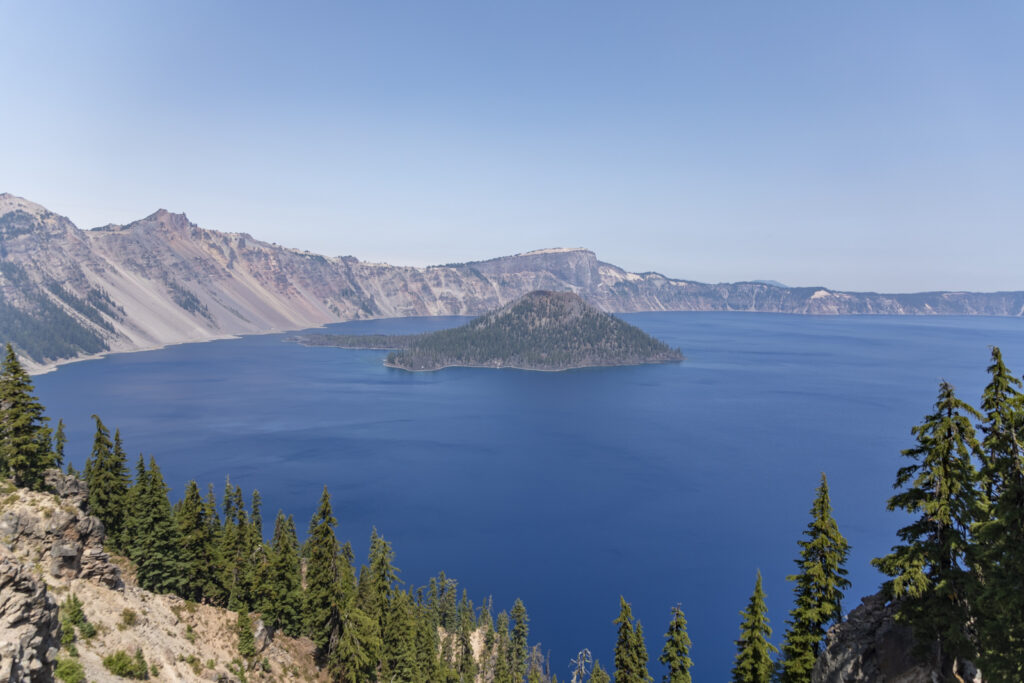
Where to Stay
Camping: Both campgrounds are in the southern half of the park. Mazama Campground is located near the South entrance and is open June through September. Lost Creek Campground is about halfway down Pinnacles Road. It’s open July through mid-October.
Lodging: Crater Lake Lodge is located in Rim Village and overlooks the lake. Rooms are available May-October. Rooms are also available at Cabins at Mazama Village.
Places to stay nearby: A few different campgrounds and RV parks are a short drive from the entrances of the park.
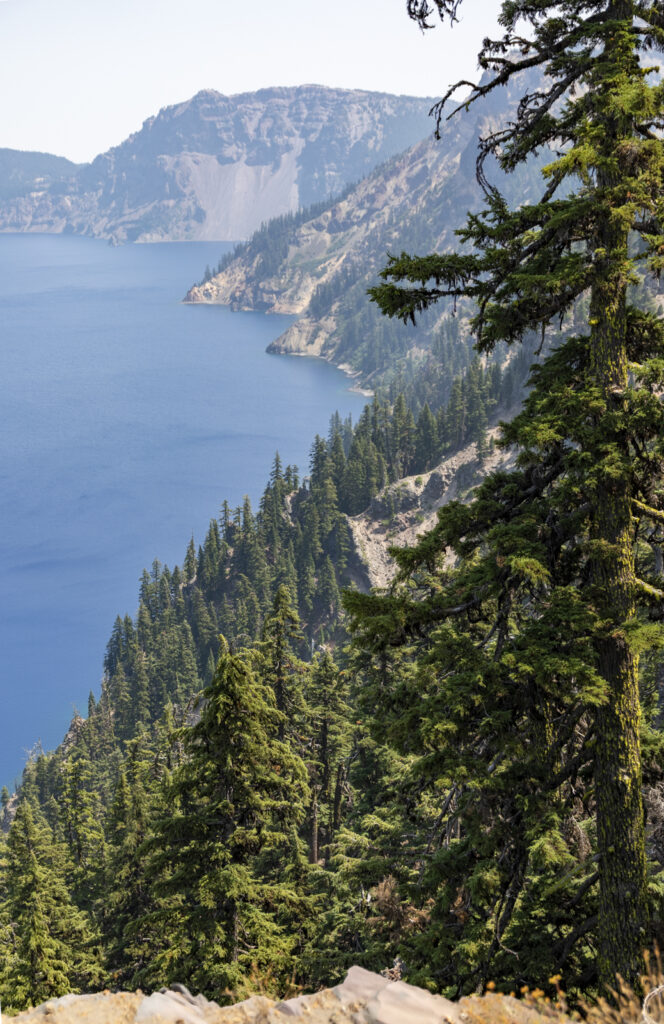
Pets
Pets are allowed in the park, but with certain considerations. Pets are not allowed in park buildings, on trails, or in the backcountry. They must be kept on a leash no longer than six feet at all times. They must never be left unattended. Be aware that pets can agitate wildlife, so be extra cautious.
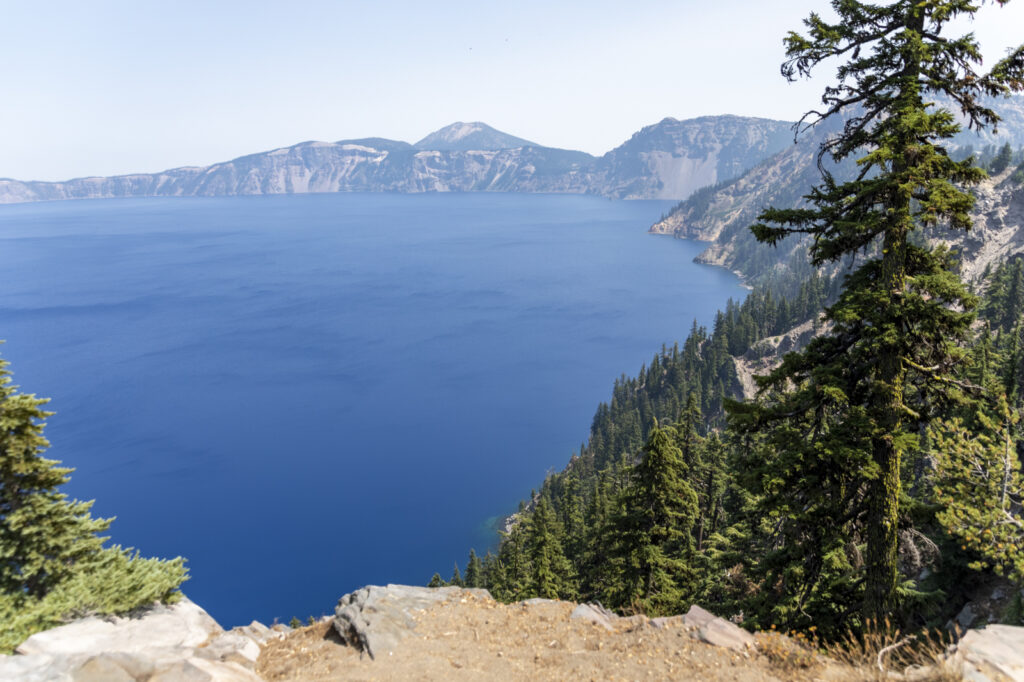
Flora and Fauna
Crater Lake National Park is home to over 700 species of plants. Even with a short growing season and difficult soil conditions, forests and meadows thrive in this national park. There are 74 species of mammals, including blear bears, elk, deer, among others. These large mammals are commonly seen at dawn or dusk, feeding in meadows. Black bear sitings are common in late spring and early fall. There are over 158 species of birds like bald eagles, peregrine falcons, American dippers, and more. And there are 26 species of reptiles and amphibians.
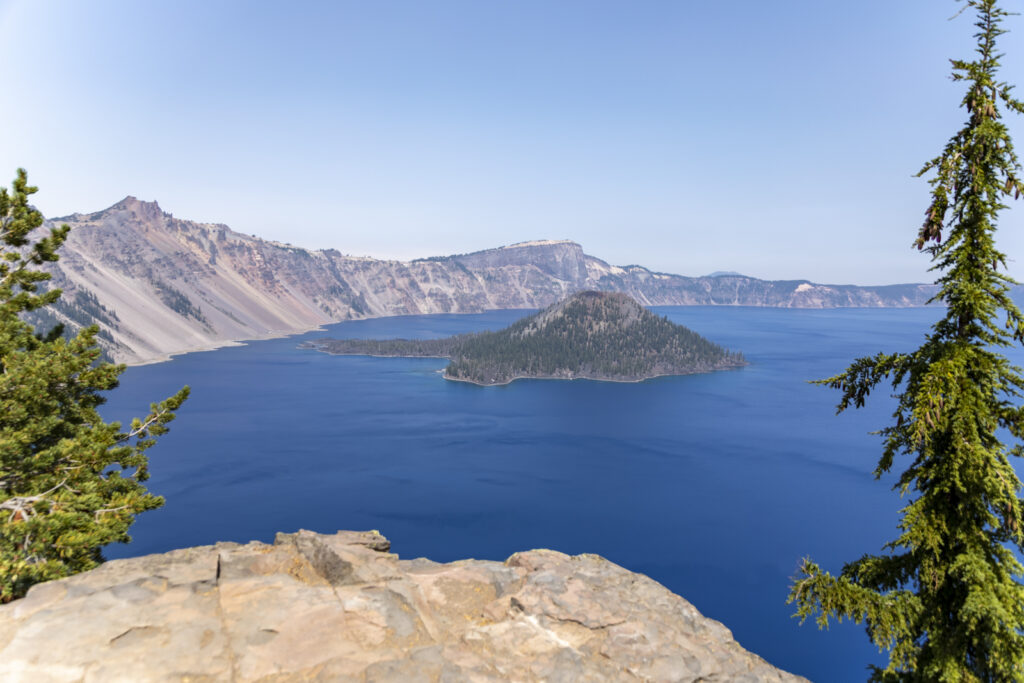
History of Crater Lake National Park
The coexistence of humans can be traced back to before the eruption of Mount Mazama. Native American artifacts from the Makalak people have been found, buried under ash and dust. The Klamath Indians, dependents of the Makalak people still tell stories of the eruption. The Umpqua people share a story similar to this. This area is sacred, and to this day, many Native Americans choose not to look at Crater Lake.
It wasn’t until the late 1800’s that European settlers discovered this area. There was violence between the Native Americans and settlers, which resulted in the US Army taking control of the area.
On May 22nd, 1902, Crater Lake became the 5th national park. Much of this conservation effort can be attributed to Gladstone Steel. For 17 years, he worked to protect this area, amongst much opposition from sheepherders and miners, wanting to exploit the area.
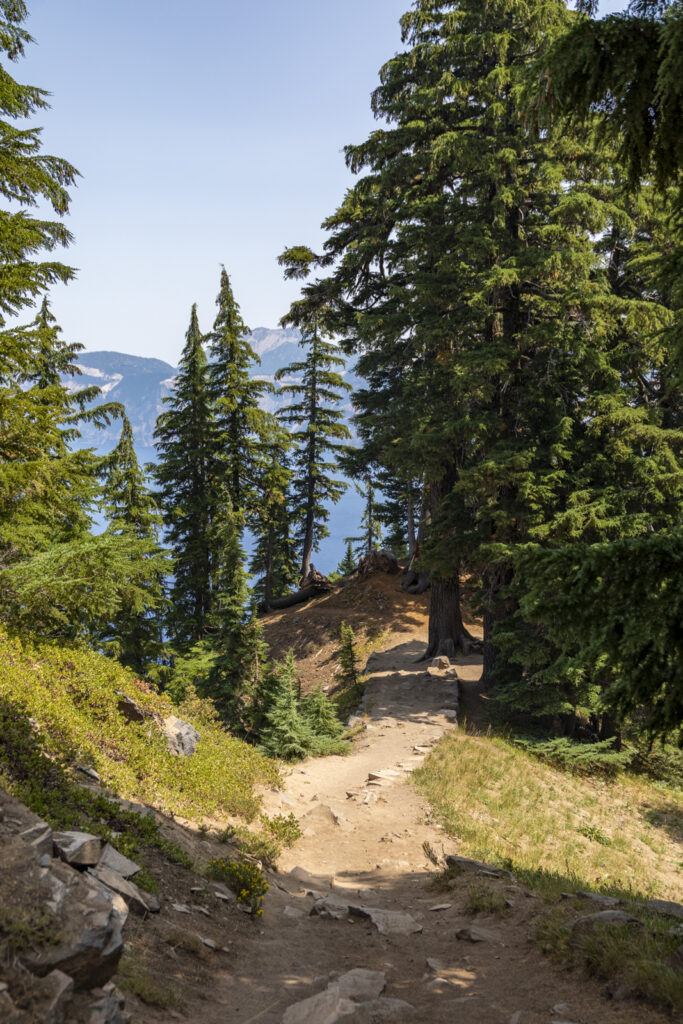
Weather and Climate
Unfortunately, Crater Lake can be difficult to see during fog, rain, and snow. I recommend staying for at least five days when visiting to increase your chances of seeing the lake. It wasn’t until the last two days of our stay that we were able to see it.
There is usually snow on the ground most months of the year. July, August, and September are the best chances for experiencing warm, dry weather.
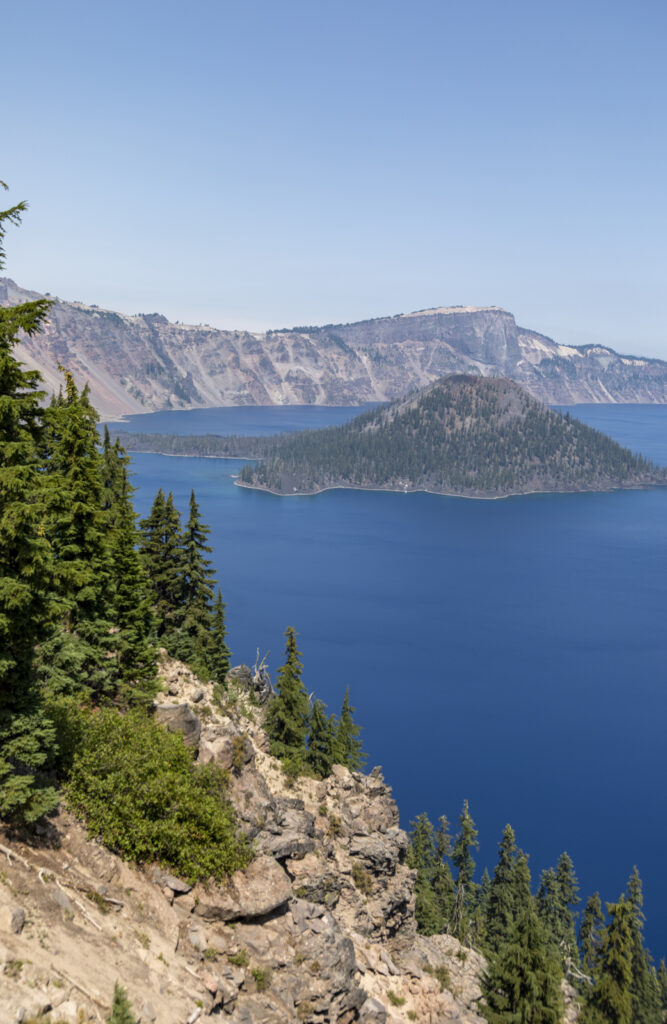
Safety
Fire: Check fire conditions and updates when visiting an area.
Wildlife: View all wildlife from a distance. All animals are wild and unpredictable.
- Black bears – If you happen to come across a black bear, it’s important to stay calm. If the bear isn’t aware of you, do not surprise them. Speak calmly and firmly to the bear. Don’t make any loud noises or scream. Back away slowly- don’t turn your back or run. If you’re with children, pick them up or hold on to them. You can read the National Park Service’s guide on hiking in bear country here. Storing your food properly is another important aspect of bear safety. Campsites have bear-proof boxes for you to store food and bear-proof garbage cans. To prevent bears from seeing humans as a potential source of food, it’s critical to store and dispose of your food responsibly and always follow the bear safety food regulations set by the National Park Service.
Driving: Be mindful of the various wildlife that crosses the roads. Avoid driving at night.
Poison Ivy: Keep an eye out for poison ivy while hiking.
Ticks: If visiting in spring or summer, make sure to check yourself for ticks.
Fun Facts:
- “Old Man of the Lake” is a 30-ft hemlock tree stump that’s been floating around the lake for more than a century. Old Man’s age is estimated to be over 450 years old and reaches about 4 feet above the water. Old Man travels around the lake and is sometimes passed by boat tours. There is a great deal of mystery and myths surrounding Old Man. Some even believe it controls the weather of Crater Lake.
- Crater Lake is the 6th oldest national park.
- Phantom Ship is a small island located in Crater Lake (not to be confused with Wizard Island). It resembles a ghost ship, especially in foggy and low-light conditions.
- The water found in Crater Lake is some of the clearest in the world.
- Crater Lake is the deepest lake in the US (1,943 feet deep). It’s the ninth deepest in the world.
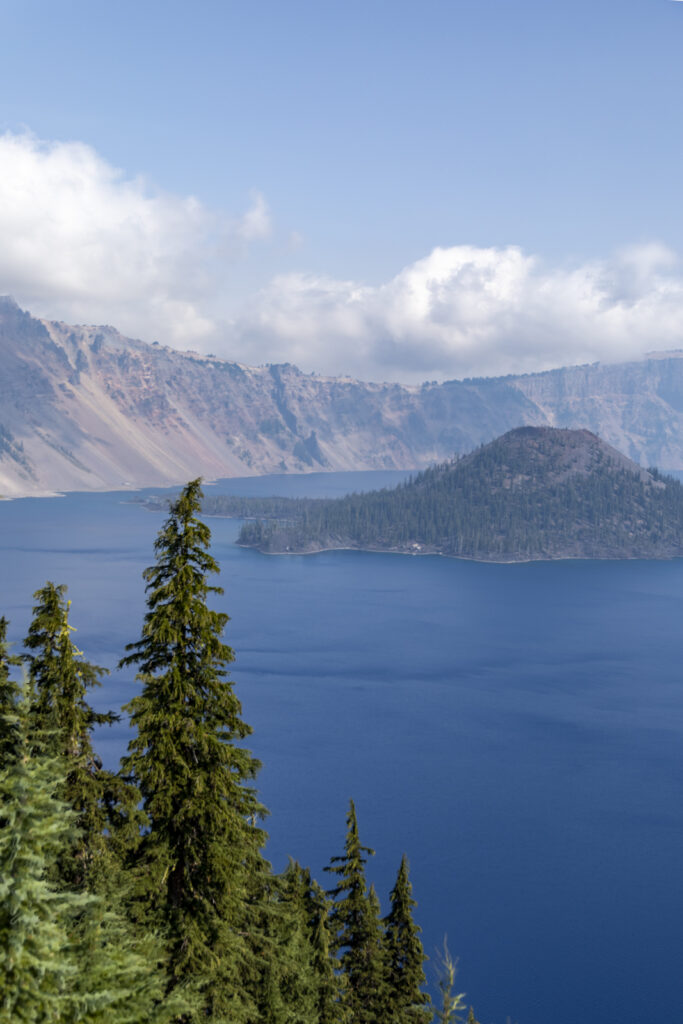
Leave No Trace
Please be respectful of nature and follow the Leave No Trace Principles. It is important to always stay on trails to avoid destroying fragile ecosystems. Take nothing but pictures, leave nothing but footprints.


